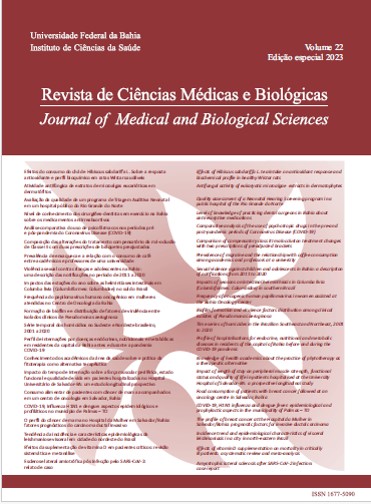Anti-resorptive drugs: technical-scientific profile of dentists
DOI:
https://doi.org/10.9771/cmbio.v22i4.55590Keywords:
Knowledge, Bisphosphonates, Antiresorptive drugsAbstract
Objective: To determine the level of scientific information of dental surgeons who carry out their professional activities in Brazil about antiresorptive drugs and indicated pharmacological procedures aiming at the prevention of osteonecrosis of the jaws and the therapy of drug sequelae that may occur, considering the time since graduation in Dentistry. Methodology: This is a quantitative cross-sectional study in which 339 dentists were consulted using the virtual questionnaire containing topics of personal nature, elements contained in the anamnesis carried out and knowledge about antiresorptive drugs, including indications, adverse effects and treatments applied, considering the maximum qualification of these professionals. Chi-square and Fisher's exact tests were performed to analyze associations of data described by absolute and relative frequencies with professionals' time since graduation. All analyses were performed using the R software, with 5% significance level. Results: Those who revealed to have graduated for more than five years with the highest academic degree were those who demonstrated maximum knowledge of antiresorptive drugs or revealed that somehow, they had information about them (p<0,05). Conclusion: Dental surgeons in Brazil who have the highest dregree have more scientific information about antiresorptive drugs and pharmacological procedures, which can positively contribute to the prevention of osteonecrosis of the jaws and treatment of drug sequelae that may occur.
Downloads
Downloads
Published
How to Cite
Issue
Section
License
Copyright (c) 2024 Journal of Medical and Biological Sciences

This work is licensed under a Creative Commons Attribution 4.0 International License.
The Journal of Medical and Biological Sciences reserves all copyrights of published works, including translations, allowing, however, their subsequent reproduction as transcription, with proper citation of source, through the Creative Commons license. The periodical has free and free access.


